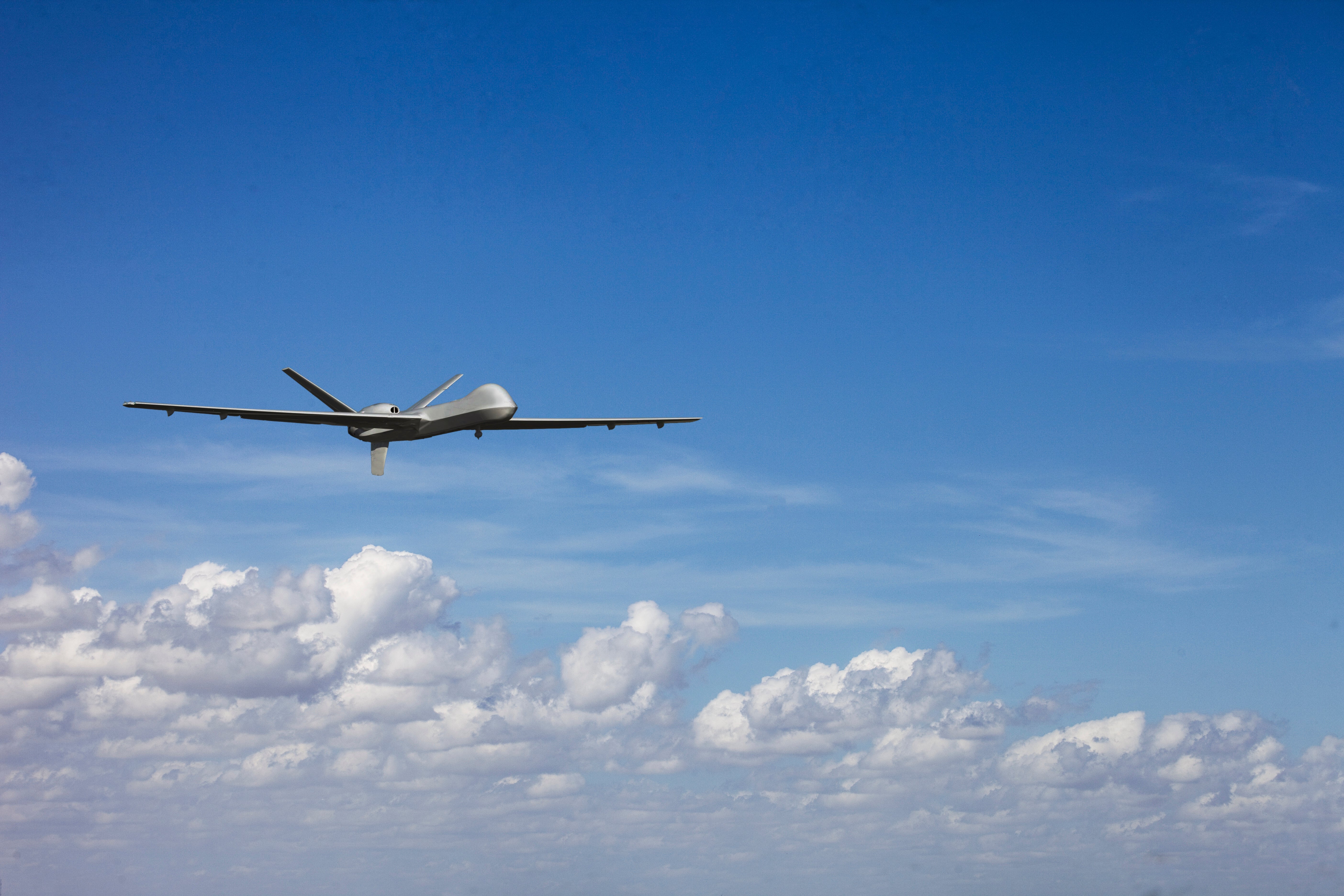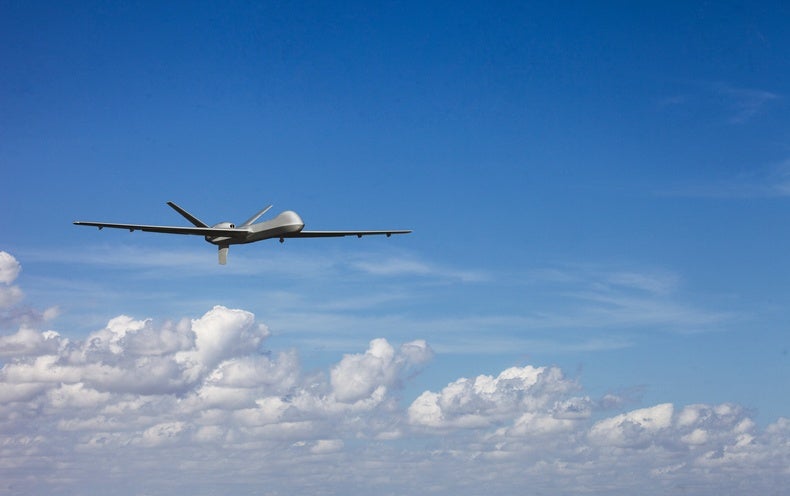
On Tuesday, two Russian fighter jets intercepted a U.S. Air Force MQ-9 Reaper drone flying high above the Black Sea. The jets brought down the drone in international waters, which has kicked off a race between Washington, D.C., and Moscow to recover the drone—a contest that could potentially extend to the depths of the Black Sea.
The MQ-9, a multipurpose workhorse for the U.S. military, was likely reporting on Russian maritime activities related to the war in Ukraine when it encountered the Russian twin-engine Su-27 jets. Air Force Gen. James B. Hecker said in a statement that the Russian aircraft carried out “unsafe and unprofessional” maneuvers—including dumping fuel on the $12 million uncrewed aircraft and flying closely in front of it.
When Russia disputed the U.S. version of events, the U.S. government—with remarkable speed—declassified video footage that had been captured by the Reaper that showed one of the jets spraying fuel as it raced toward the drone. Eventually one of the Russian aircraft came into contact with the four-blade propeller that powers the drone from behind, which snapped a propeller blade and caused the MQ-9 to crash into the water, according to the Pentagon.
The next day Sergey Naryshkin, director of the Russian Foreign Intelligence Service, declared that Moscow had the ability to recover the MQ-9’s remains. But U.S. Army Gen. Mark Milley, chairman of the Joint Chiefs of Staff, suggested in a press conference on Wednesday that there would be little of interest left for the Russians to find.
“As far as the loss of anything of sensitive intelligence…, we did take mitigating measures, so we are quite confident that whatever was of value is no longer of value,” Milley said. This might imply that the U.S. military has the capability to remotely disable or destroy some of the technology on the drone.
A standard MQ-9 Reaper carries what is called a multispectral targeting system. This includes a number of visual sensors, in particular an infrared (IR) sensor and an electro-optical (EO) sensor, which consists of a color sensor and a monochrome daylight TV camera. Footage from the three types of cameras on these two sensors can be viewed as video streams. The drone also carries a small Lynx radar to detect movement and activity on the ground. In addition, the Reaper has other equipment-carrying structures called pylons. Depending on the mission, these can support additional sensors—or even bombs and missiles.
But “this MQ-9 was not armed; it was only carrying sensors,” says David Deptula, a retired Air Force lieutenant general and former deputy chief of staff for intelligence, surveillance and reconnaissance.
Even without weapons onboard, the MQ-9 might have at least initially carried technology that would reward Russian recovery efforts. “What value Russia might get from recovery depends on what is being carried on the aircraft,” Deptula says. “If there were some sort of unique sensor onboard, that would be one thing. They might recover something they have not been exposed to before to exploit it for its technology. But if it was configured in a nominal mode, with its standard EO/IR payload sensor and its Lynx radar, then there is no significant loss if the Russians recover it,” he adds.
This is not the U.S. Department of Defense’s first potential MQ-9 technology loss. In 2017 a Reaper was shot down in Yemen. In 2019 a missile downed an MQ-9 in Libya. There was also another loss over Syria in 2020. “Parts of the MQ-9 have been exploited and shared elsewhere in previous years,” Deptula says.
And the DOD might still attempt to recover the drone that was downed this month. “We’re assessing options,” said Pentagon spokesperson Brig. Gen. Pat Ryder during a press briefing on Thursday.
Milley said the U.S. government knows exactly where the MQ-9 landed in the Black Sea. “It’s probably [at a depth of] about maybe 4,000 or 5,000 feet of water, something like that,” the general said. “So any recovery operation is very difficult at that depth by anyone.” When the U.S. military lost an F-35 Joint Strike Fighter in the South China Sea last year, it took five weeks to pull it up from a depth of 12,400 feet.
Potential options for salvaging the MQ-9 likely include plans drawn up by the supervisor of diving and salvage in the Navy’s directorate of ocean engineering. That office oversees a warehouse full of deep-ocean salvage equipment, including a family of autonomous and remotely operated vehicles, as well as a portable lift system. These machines work together to find wreckage and haul it up through thousands of feet of water.
But that bulky gear, as well as the contractors trained to execute missions on behalf of the U.S. government, are based in Largo, Md.—far from the remains of the downed drone. If the U.S. does undertake a recovery mission, just getting there will take a significant amount of time. First the military must hire a commercial ship in the Black Sea to host the equipment, which will have to be temporarily welded to the ship’s deck. Then it will take more time to hunt and haul up the wreckage. In other words, no U.S. recovery will happen any time soon.
As for Russia, little is known about its deep-water retrieval capabilities. But any such mission would likely involve dragging the 36-foot-long, 4,900-pound aircraft up through thousands of feet of water—if it’s still in one piece. If it broke up when it smashed into the water, retrieval will require combing the seabed for parts spread across many square miles. That’s no mean feat for anyone.
























































